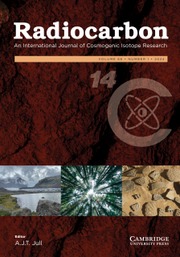Article contents
Radiocarbon and the Old World Archaeology: Shaping a Chronological Framework
Published online by Cambridge University Press: 18 July 2016
Abstract
The inception of the radiocarbon dating method in 1949 was immediately supported by many archaeologists. In the following 2 decades, many important archaeological sites in the Old World were dated, marking the beginning of building a reliable chronological framework for prehistoric and early historic cultural complexes worldwide. The author presents an observation of some of the most important results in establishing a chronology for Old World archaeology, based on 14C dating performed in the last 50 yr. An extensive bibliography should help scholars to get acquainted with early summaries on archaeological chronologies based on 14C data and their evaluation, as well as with some recent examples of the application of 14C dating in Old World archaeology.
Information
- Type
- Archaeology
- Information
- Copyright
- Copyright © 2009 by the Arizona Board of Regents on behalf of the University of Arizona
References
REFERENCES
- 10
- Cited by

